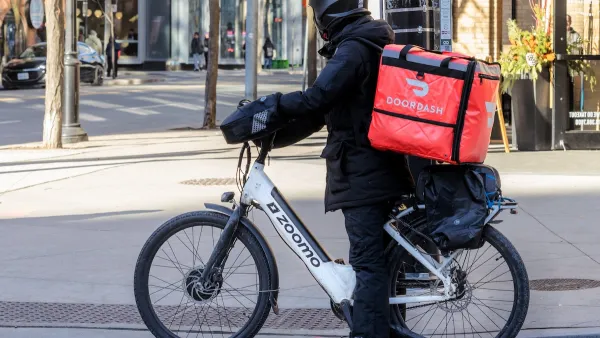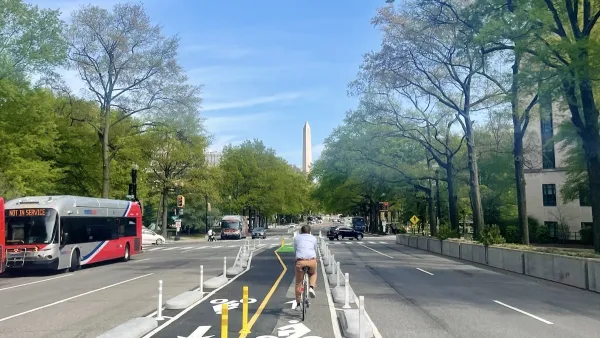A grad student in our program at Ball State told me several months ago that he wanted to do his creative project (a thesis alternative) on “low impact development.” His particular interest was in what we called “natural drainage systems” when I worked with the planners and landscape architects at Rahenkamp, Sachs Wells in Philadelphia 30 years ago. I told him that it was a great topic and suggested some contemporary and older resources, including an excellent 1975 publication by the Urban Land Institute entitled Residential Storm Water Management. I also told the student that the big issue with such systems is maintenance.
A grad student in our program at Ball State told me several
months ago that he wanted to do his creative project (a thesis alternative) on "low
impact development." His particular interest was in what we called "natural
drainage systems" when I worked with the planners and landscape architects at
Rahenkamp, Sachs Wells in Philadelphia 30 years ago. I told him that it was a great topic and
suggested some contemporary and older resources, including an excellent 1975
publication by the Urban Land Institute entitled Residential Storm Water Management. I also told the student that
the big issue with such systems is maintenance.
The history is in itself interesting. The ULI was an early proponent of such systems because they saved costs at the development stage -- and seemed environmentally more responsible. Today, as we seek more sustainable models for our communities and cope with the MS4 rules that now apply to all urbanized areas, local "green" groups and environmental control officers see such systems as a good alternative to the traditional systems of curbs, gutters and storm sewers.
My comment did not dampen the student's enthusiasm and he has worked
diligently on the project for many weeks.
We have talked about his research and findings. He missed a class last
week to attend a full-day conference discussing this very subject. We met today and I asked him how it was
going. He said, "The big issue is maintenance, and nobody seems to have good
answers to it."
I took no pleasure in being right about his major obstacle
and about a probable major conclusion of his paper. He is the kind of student
who, I hoped, might find that hidden success story somewhere that solved the
problem. But the issue is real. The first time a city engineer or public
works director told me that "maintenance is a problem" with such systems, I
assumed that this was in the same league with "fire trucks need 100-foot radii
on cul-de-sacs" and that there were a range of solutions. As my colleagues and I at Duncan Associates
have worked with local governments in writing development codes over the last
20 years, however, I have recognized the depth and complexity of the problem,
particularly in residential areas.
Some developments use swales and ponds in easements that
cross dozens or hundreds of individual lots. Even I recognized that immediately
as a major problem waiting to happen.
All it takes is one homeowner to put a storage shed in the swale or to
fence her or his entire yard, including the swale, to impede the flow of the
swale and back water up onto "upswale" landowners. Even a chain link or mesh
fence will, over time, gather debris and become a solid dam. Giving complete
maintenance responsibility and management control to multiple individual
homeowners is not a workable solution for an important public facility.
Some projects keep the swales in the ownership of an
association. From a planning perspective, that is a better approach than "lotting
out" the facilities. Homeowners' associations, however, have budget issues much
like those of local governments – but few of them have staff engineers around
to say "we must take care of this facility."
Thus, when the association budget is tight and it must choose among
patching potholes, fixing the swimming pool and doing routine maintenance on
the stormwater facilities, I would bet on the swales and ponds coming in last.
Local governments are typically not enthusiastic about
accepting dedication of such facilities, in part because they are not staffed
to maintain them. Concrete, underground
stormwater pipes need little routine maintenance. The streets and gutters used
as the collection system primarily need sweeping, a job that most cities
accomplish easily and regularly with big equipment. Swales
and ponds need occasional patrols to pick up trash and debris, periodic mowing
(particularly in wet climates), and regular monitoring and occasional
maintenance on filters, controlled outflow points and other critical
elements. None of it is high-tech and
none of it is particularly expensive – and none of it fits the job description
of anyone in the typical public works or streets department. Sure, parks
departments mow lots of things – but they mostly do it with large tractors that
mow six or eight feet at a swatch, equipment that is ill-suited to narrow,
gradually sloped swales.
Even if a
particular local government is willing to undertake such maintenance tasks, I
recall a conversation several years ago with a public works director who hated
alleys. I asked her why. She said, "they are ideal for picking up
trash and a good place for utilities."
"So, what is the problem?"
"Our trash trucks and utility maintenance equipment are
large. People plant trees in their
backyards and the trees gradually grow large branches over the alley. The only way to get our equipment through the
alley is to through and trim the trees periodically. When we do that, I get
hate mail and complaints for city council members. I hate alleys."
So what is my message today?
Well, one part of it is the hope that someone who reads this will blog
or e-mail and say "We SOLVED that. Here
is the perfect solution." Now I am
always skeptical of professed easy solutions to complex problems (as I was when
a colleague, in accurately, told me that his county had come up with a perfect
TDR system), but I will certainly listen with interest.
My more important message, however, is that, as planners, we
need to think through all of the implications of our proposals. I have
colleagues suggesting local planning solutions to global warming. Some of them are inherently practical, but some
of them look good only on paper – because no one has thought about how to
manage and maintain them over time. Most of us are not engineers and cannot
fully design engineered solutions to complex infrastructure problems – but as
we propose new planning concepts, we should at least be thinking about how they
might work, or not, in a real community, over time, in good budget times and
bad.

Maui's Vacation Rental Debate Turns Ugly
Verbal attacks, misinformation campaigns and fistfights plague a high-stakes debate to convert thousands of vacation rentals into long-term housing.

Planetizen Federal Action Tracker
A weekly monitor of how Trump’s orders and actions are impacting planners and planning in America.

In Urban Planning, AI Prompting Could be the New Design Thinking
Creativity has long been key to great urban design. What if we see AI as our new creative partner?

King County Supportive Housing Program Offers Hope for Unhoused Residents
The county is taking a ‘Housing First’ approach that prioritizes getting people into housing, then offering wraparound supportive services.

Researchers Use AI to Get Clearer Picture of US Housing
Analysts are using artificial intelligence to supercharge their research by allowing them to comb through data faster. Though these AI tools can be error prone, they save time and housing researchers are optimistic about the future.

Making Shared Micromobility More Inclusive
Cities and shared mobility system operators can do more to include people with disabilities in planning and operations, per a new report.
Urban Design for Planners 1: Software Tools
This six-course series explores essential urban design concepts using open source software and equips planners with the tools they need to participate fully in the urban design process.
Planning for Universal Design
Learn the tools for implementing Universal Design in planning regulations.
planning NEXT
Appalachian Highlands Housing Partners
Mpact (founded as Rail~Volution)
City of Camden Redevelopment Agency
City of Astoria
City of Portland
City of Laramie






























